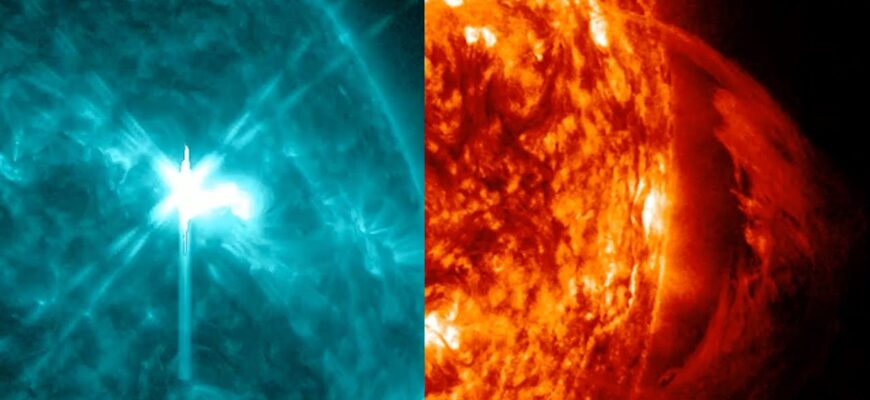Recent observations confirm a dramatic increase in the Sun`s solar cycle, with activity levels rocketing by 70% in just three months. This significant surge has scientists closely monitoring our star`s behavior.
Unpacking the Surge: What the Numbers Tell Us
Our star, the Sun, is far from a static beacon in the sky. It`s a dynamic, ever-changing entity, and its current performance is particularly noteworthy. According to detailed data from the Laboratory of Solar Astronomy at Russia`s Space Research Institute, the solar cycle has experienced a profound and sustained growth for three consecutive months. Since May 2025, solar activity has intensified by nearly 70%, effectively returning to the robust levels observed at the start of 2024. This isn`t just a minor fluctuation; it signifies a vigorous and somewhat rapid re-energization of the Sun`s magnetic engine.
Echoes of the Past: The “Double-Peak” Phenomenon
What drives this sudden surge? Scientists point to structural patterns identified in the two preceding solar cycles of the 21st century. Both of these cycles were characterized by two distinct peaks of comparable intensity, typically separated by an interval of approximately 18 to 24 months. It appears the Sun, in its grand cosmic dance, often follows a peculiar rhythm, a sort of celestial choreography. Understanding these historical “double-peak” tendencies provides a critical framework for interpreting the current acceleration. If history is any guide, we might be witnessing the build-up to a second, powerful phase in the current solar cycle, rather than a single, isolated peak. Despite our most sophisticated models, predicting the Sun`s exact behavior remains a complex endeavor, showcasing our star`s charming unpredictability.
Why Does It Matter? Earth`s Interplanetary Weather Forecast
While fascinating for astrophysicists, increased solar activity isn`t just an academic curiosity. It directly influences `space weather` – a phenomenon with tangible implications for our technological world. Increased solar activity directly correlates with a higher probability of powerful events such as solar flares and coronal mass ejections (CMEs). When these bursts of radiation and plasma are directed towards Earth, they can cause geomagnetic storms. These storms, while occasionally offering spectacular auroral displays (a stunning visual reminder of our Sun`s power), pose potential risks:
- Satellite Disruptions: Affecting GPS navigation, satellite communications, and critical weather forecasting systems.
- Power Grid Instability: Inducing currents in long transmission lines, potentially leading to widespread blackouts.
- Astronaut Safety: Increased radiation exposure for space travelers and those aboard the International Space Station.
- Radio Blackouts: Disturbing high-frequency radio communication, impacting aviation and maritime operations.
Therefore, monitoring the Sun isn`t merely an academic exercise; it`s a vital component of protecting our increasingly interconnected global infrastructure. A little extra solar flair, it turns out, can indeed lead to significant terrestrial headaches.
Autumn 2025: A Season Under the Solar Spotlight
With the solar cycle now demonstrating such a pronounced upward trend, the upcoming autumn season of 2025 has become a period of particular interest for solar astronomers. The question isn`t just *if* the activity will continue, but *how* it will evolve. Will the Sun proceed to develop a second, powerful peak, mirroring its past behaviors? Researchers worldwide, including those at the Space Research Institute, will be meticulously observing sunspots, solar flares, and other indicators. Their vigilant work is essential for refining space weather predictions and ensuring that industries and governments can proactively prepare for any potential geomagnetic challenges.
The Unpredictable Star: A Concluding Thought
The Sun consistently reminds us that it is a complex and sometimes capricious star. The current vigorous resurgence in its activity serves as a powerful, luminous testament to the intricate and often profound connection between our planet and its stellar parent. As we navigate this energized phase of the solar cycle, the scientific community remains poised, diligently decoding the Sun`s powerful, if somewhat cryptic, messages. It`s a reminder that even the most familiar objects in our cosmos hold endless wonders and a healthy dose of unpredictability, keeping us on our toes and our telescopes pointed skyward.








